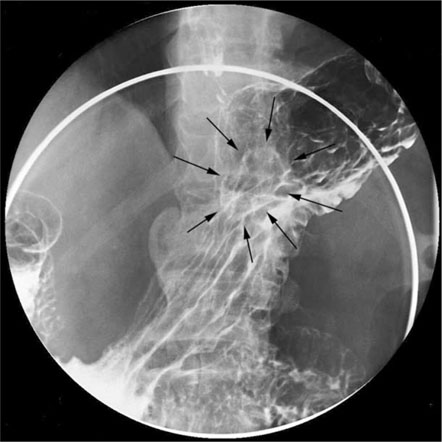J Korean Soc Radiol.
2010 Jul;63(1):45-48. 10.3348/jksr.2010.63.1.45.
Adrenal Rest Tumor from the Greater Omentum Mimicking Exophytic Hepatocellular Carcinoma (HCC): A Case Report
- Affiliations
-
- 1Department of Radiology, Daegu Fatima Hospital, Korea. smoke753@paran.com
- 2Department of Pathology, Catholic University Hospital of Daegu, Korea.
- 3Department of Radiology, Daegu Veterans Hospital, Korea.
- 4Department of Surgery, Daegu Veterans Hospital, Korea.
- KMID: 2208885
- DOI: http://doi.org/10.3348/jksr.2010.63.1.45
Abstract
- Adrenal rest tumors are aberrant adrenocortical tissue which has been most commonly described in abdominal and pelvic sites. To our knowledge, there has been no previous description of an adrenal rest tumor of the greater omentum. We present a case of a pathologically confirmed adrenal rest tumor of the greater omentum in a 76-year-old man.
Figure
Reference
-
1. Schechter DC. Aberrant adrenal tissue. Ann Surg. 1968; 167:421–425.2. Bothe AE. Hypernephromata. Ann Surg. 1926; 84:57–88.3. Bozic C. Ectopic fetal adrenal cortex in the lung of a newborn. Virchows Arch Path Anat. 1974; 363:371–374.4. Weiner MF, Dallgaard SA. Intracranial adrenal gland: a case report. Arch Pathol. 1959; 67:228–233.5. McLetchie NGB, Scott LDW. Carcinoma of an adreno-cortical rest associated with hypophyseal abnormality. J Endocrinol. 1942; 3:347–355.6. Tajima T, Funakoshi A, Ikeda Y, Hachitanda Y, Yamaguchi M, Yokota M, et al. Nonfunctioning adrenal rest tumor of the liver : radiologic appearance. J Comput Assist Tomogr. 2001; 25:98–101.7. Baba Y, Beppu T, Imai K, Masuda T, Iyama K, Sasano H, et al. A case of adrenal rest tumor of the liver: radiological imaging and immunohistochemical study of steroidogenic enzymes. Hepatol Res. 2008; 38:1154–1158.8. Macmillan SF, Gilbert JB. Aberrant adrenal tumor of upper part of abdomen. Arch Surg. 1940; 40:77–82.9. Nicholson BS. Abnormal position of suprarenal gland. Br Med J. 1894; 1:408.
- Full Text Links
- Actions
-
Cited
- CITED
-
- Close
- Share
- Similar articles
-
- Hepatic adrenal rest tumor mimicking hepatocellular carcinoma
- Adrenal Mass as Initial Presentation of Metastatic Hepatocellular Carcinoma: A Case Report
- Rupture of hepatocellular carcinoma after transcatheter arterial chemoembolization: A case report
- Rupture of Metastatic Omental Hepatocellular Carcinoma Following the Treatment of Ruptured HCC
- Dynamic CT Finding of Pelioid HCC; Case Report






